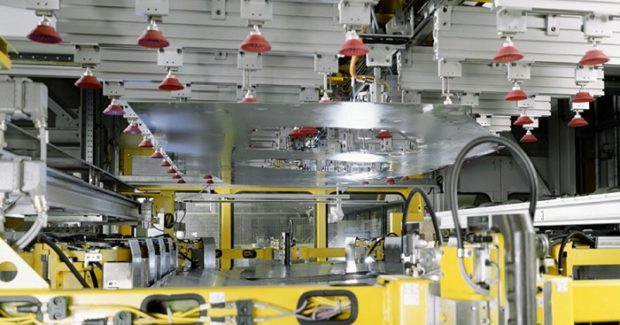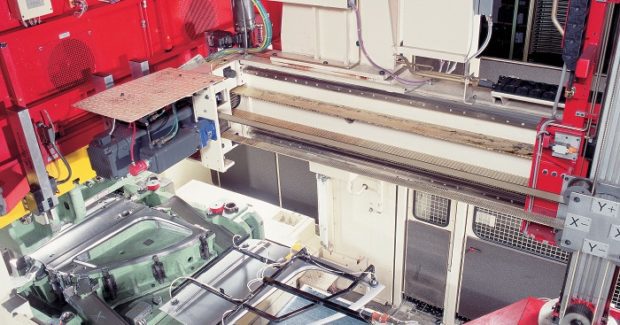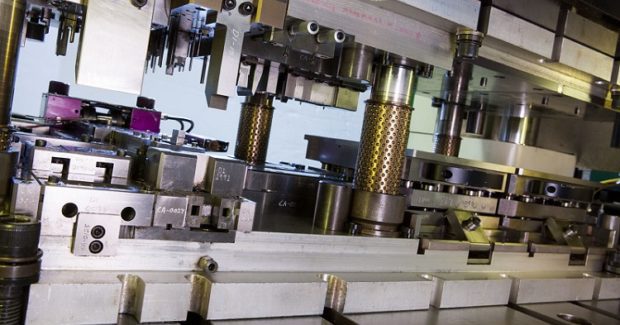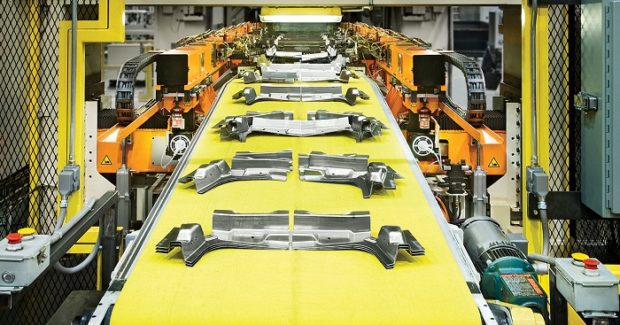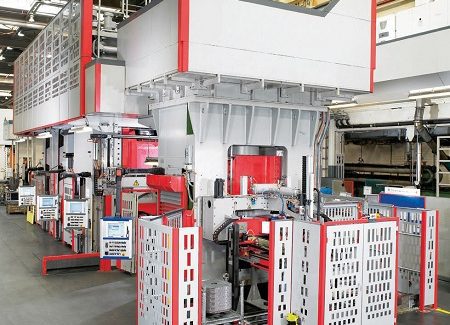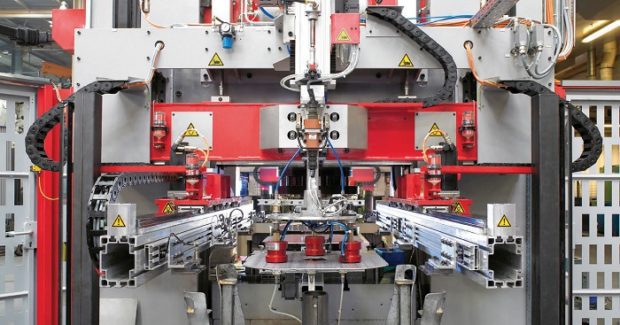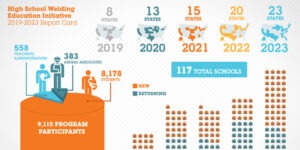How the Stamping Industry Stays Strong
The stamping industry will be alive and strong in 2018, shifting to meet the changing needs of the marketplace and their customers. Here are some insights into how the industry is evolving to remain competitive and healthy.
Posted: December 11, 2017
I am no economist or clairvoyant, but I’ve been around manufacturing my entire life and immersed in the industry in one way or another for 21 years, from making chips to customer service to product management. From my vantage point in the metal stamping industry, manufacturing is alive and strong in the United States. Late last year, the Purchasing Managers’ Index (PMI; Institute for Supply Management, Tempe, AZ) reported over a year of consecutive growth in manufacturing. Coming off of a 13-year manufacturing activity high of 60.8 percent in September, the fall season continued to be strong as the average manufacturing workweek crept up to 41 hours with 3.5 hours of overtime.1 With unemployment at 4.1 percent, the shortage of skilled labor looms as a barrier to rapid growth, but sustained growth is achievable and that’s better for the long haul. U.S. manufacturing is nearing capacity as utilization runs at 75.5 percent and 46.8 percent of facilities report greater than 80 percent capacity.1, 2
Rising lead times and prices suggest a need for further expansion, primarily through capacity gains but also through efficiency gains. Will the president’s tax relief bill increase U.S. manufacturing? Only time will tell if those cuts actually spur the economy or further the national debt. Capital spending in 2017 was modest but still higher than 2016, and according to a recent survey by the Third Federal Reserve District (Philadelphia, PA), the coming year looks even better: over 50 percent of participants expect to spend more on non-computer equipment (which is typically equipment used for production) in 2018 than they did last year.
International markets are also running near capacity at 76.9 percent, and their growth projections also reflect the overall strength of manufacturing.3 The global metal stamping market was $204.6 billion in 2016 and should grow by roughly 4.3 percent to $299.6 billion by 2021. Much of this is fueled by the high demand for automobiles. Macquarie Bank (Sydney, Australia) reported that a record 88.1 million cars and light commercial vehicles were sold in 2016. Last year was slightly lower, with estimates still in the low 80 million range. The $26 billion aerospace materials market should grow by 6.9 percent over the next five years. Strength in broader economies also bodes well for manufacturing. The Eurozone enjoyed a healthy 2.2 percent growth in 2017, their best year in a decade. With two percent growth projected in 2018 and a favorable dollar, exports to the Eurozone should continue to be strong. The Asia Pacific region, which accounts for one-third of the total metal stamping market, has also seen more emerging strength, with India and China continuing to be the regional market leaders.4, 6
To serve the evolving demands in all of these markets, the stamping industry is also evolving: Shops now process lighter and stronger, more durable materials. They are adopting smart technology for greater connectivity, instant communication and faster response. Some use new systems, such as additive manufacturing, for quicker turnaround of jobs. They are all learning how to engage the next generation of workers. One profound lesson being learned from this evolution is to not simply add technology for process improvements that will be difficult to implement and to sustain. Change must connect to purpose to be effective, so shops are learning how to first create a technology plan with a clear, thoughtful and flexible focus. As the first step in the change process, formal planning makes implementing new technologies easier, more efficient and less expensive than just trying a few ideas.
Planning also raises awareness of not being equipped with the right experience for change: A shop may be really good at efficiently manufacturing products today, but the changes they must make to remain competitive may require a different mindset and skillset. They are willing to look at a familiar process or intimate piece of equipment from a different perspective, but it is difficult for them to abandon that familiar machinery or idea – it made them money! – for an unproven technology or idea. Adopting a different mindset and skillset can be especially tough when the next generation of workers is more comfortable in a different, unfamiliar setting . . . but inside this evolution of our workforce lies the heart of innovation and the future of manufacturing. How do we engage the next generation in manufacturing?
U.S. manufacturing directly employs around 12.4 million people, or approximately 9 percent of our working population, which expands to nearly one-third of our total workforce when jobs in other economic sectors connected to manufacturing are included. Though trade schools have seen a rise of enrollment in recent years, there is not enough new skilled labor to offset the nearly 10,000 baby boomers that retire every day. Our shrinking workforce demands new labor or improved manufacturing methods. As millennials become 50 percent of our workforce by 2020, work habits and productivity methods will change.5 To sustain their health during this transition, shops must move from focusing on how millennials complete their work to teaching them what they know, rather than how to do it. Knowledge must willingly shift from one employee base to another without necessarily shifting the process.
Think this through with me. When I first started in manufacturing, I learned basic milling principles on one of our ten manual Bridgeports. I look around the shop today and see only a few manual mills, mostly unused, and realize that CNC equipment is the starting point now. The programming involved in machining today is far more complex in code, yet simple in the minds of the next generation. What cannot be lost, however, are those basic principles of manufacturing. Teaching these principles and allowing the next generation to find faster and better ways to consistently improve them is how real innovation is created.
The stamping industry will be alive and strong in 2018, shifting to meet the needs of the marketplace and their customers, but your manufacturing forecast depends on how well your company can evolve. Trying compete without evolving is a viable option, but remember why your company was created: to improve upon something that already existed or to meet a need for something that never existed before.
References
- Bureau of Labor Statistics, 2017. Economic New Release: Employment Situation Summary, November 3, 2017. United States Department of Labor. Retrieved from: www.bls.gov/news.release/empsit.nr0.htm.
- Cahill, K. 2017. October 2017 Manufacturing ISM® Report on Business®. Institute for Supply Management, November 1, 2017. Tempe, AZ. Retrieved from: www.instituteforsupplymanagement.org/about/MediaRoom/newsreleasedetail.cfm?ItemNumber=30962&SSO=1.
- Sources: Federal Reserve Board, Haver Analytics. Retrieved from: www.philadelphiafed.org/research-and-data/regional-economy/business-outlook-survey/2017/bos1017.
- www.prnewswire.com/news-releases/global-metal-stamping-market-report-2017-analysis-2014-2017–forecasts-to-2025-300550006.html.
- PwC – Millennials at Work. Reshaping the Workplace. Retrieved from: www.pwc.com/m1/en/services/consulting/documents/millennials-at-work.pdf.
- Grand View Research, retrieved from: www.grandviewresearch.com/press-release/global-metal-stamping-market.



